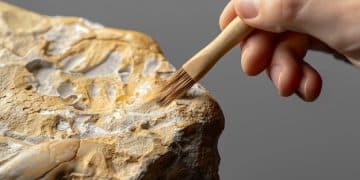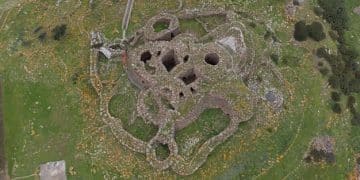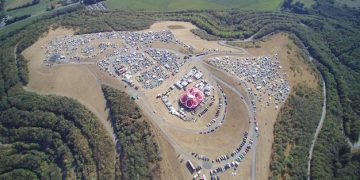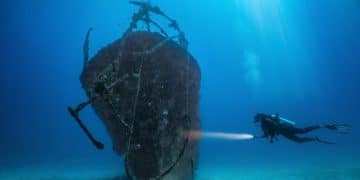Roanoke Colony Mystery: New Archaeological Discoveries Unveiled
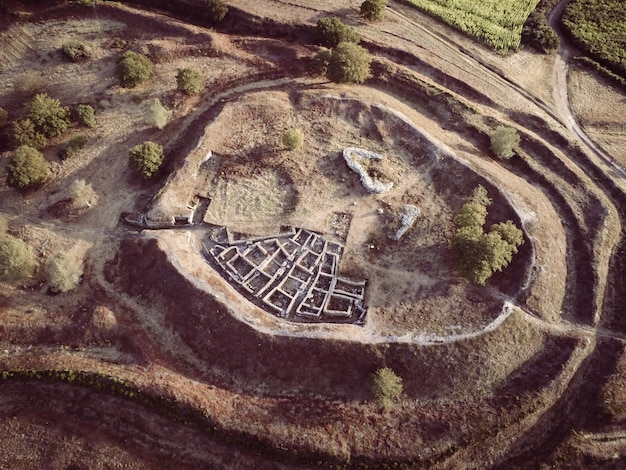
New archaeological findings are shedding light on the mysterious disappearance of the Roanoke Colony, suggesting possible integration with Native American tribes or relocation influenced by environmental factors, offering fresh perspectives on one of America’s oldest unsolved historical puzzles.
The tale of The Mystery of the Lost Colony of Roanoke: What Recent Archaeological Finds Suggest About the Fate of the Early Settlers has captivated historians and enthusiasts for centuries. It remains one of the most enduring enigmas in American history, a story of pioneers who vanished without a trace, leaving behind only a single word carved into a tree: “CROATOAN.” What truly happened to these early English colonists, who arrived on Roanoke Island in 1587? The answer has eluded generations, fueled by speculation, myth, and a persistent void of concrete evidence. Yet, the relentless work of archaeologists, armed with cutting-edge technology and renewed perspectives, is slowly beginning to peel back the layers of this profound historical puzzle. Their discoveries, often unearthed in challenging conditions, offer fascinating new insights, hinting at possibilities far more complex than simple disappearance.
The Historical Context of the Roanoke Colony
Understanding the disappearance of the Roanoke Colony requires an appreciation of its intricate historical backdrop. In the late 16th century, England, under Queen Elizabeth I, was eager to establish a foothold in the New World, driven by economic ambitions to find precious metals and establish trade routes, as well as geopolitical rivalry with Spain. Sir Walter Raleigh, a favorite of the Queen, spearheaded these efforts, leading to three attempts at colonization on Roanoke Island.
The first attempt, in 1585, was primarily a military expedition, ending with the departure of most colonists due to harsh conditions and conflicts with indigenous populations. The stage was then set for the “Lost Colony” of 1587, led by Governor John White, comprising 117 men, women, and children, including Virginia Dare, the first English child born in the Americas. White’s return to England for supplies was delayed by the Anglo-Spanish War, preventing his return for three long years. When he finally made it back in 1590, the settlement was deserted. The only clues were “CROATOAN” carved into a palisade post and “CRO” on a tree nearby, with no signs of struggle or forced removal.
Early English Expeditions to Roanoke
The initial ventures to Roanoke were fraught with challenges, setting a precarious precedent for the later colony. These early expeditions were vital reconnaissance missions, but they also highlighted the immense difficulties inherent in establishing a sustainable settlement in an unfamiliar and often hostile environment.
- 1584 Reconnaissance Voyage: Led by Philip Amadas and Arthur Barlowe, this expedition provided glowing reports of the region, emphasizing its fertility and potential.
- 1585 Military Colony: Richard Grenville’s and Ralph Lane’s punitive expedition, fraught with conflict with the Secotan, showcased the difficulty of maintaining peace.
- 1587 “Lost Colony”: John White’s group of families, intending permanent settlement, faced supply shortages and the impending war with Spain.
The failures and partial successes of these early attempts formed a crucial, albeit tragic, prelude to the ultimate fate of the 1587 colonists. The challenges of climate, logistics, and Native American relations were factors that would profoundly shape the destiny of Roanoke.
The context also involves the complex relationship with the local Algonquian-speaking peoples, particularly the Croatoan (now Hatteras) and the Secotan. While some interactions were peaceful, conflicts over resources and cultural misunderstandings were common. Governor White’s final instruction to his colonists was to carve a cross above the word if they were forced to leave under duress, a sign conspicuously absent upon his return. This absence, coupled with the word himself, has fueled centuries of speculation, with many assuming either massacre or integration, the latter being a stronger contender in recent archaeological thought.
Traditional Theories and Their Limitations
For centuries, the void left by the disappearing Roanoke colonists was filled with a range of theories, each attempting to explain the enigma. These traditional hypotheses typically centered on two main scenarios: violent obliteration or peaceful assimilation. However, their reliance on anecdotal evidence, secondhand accounts, and a lack of direct archaeological support often left them wanting, failing to provide conclusive answers.
Violence and Massacre Theories
One of the earliest and most dramatic theories posited that the colonists were massacred by hostile Native American tribes, or perhaps even by the Spanish, who viewed English colonization as an unwelcome intrusion. Contemporary reports from Jamestown colonists, for instance, hinted at the powerful Powhatan Confederacy destroying the Roanoke settlement, possibly at the behest of their paramount chief, Wahunsenacawh, also known as Chief Powhatan. However, these accounts often lacked direct corroboration and could have been influenced by political motives or misunderstandings.
- Powhatan Attack: Jamestown accounts suggesting Chief Powhatan eradicated the colony due to perceived threats or a prophecy.
- Spanish Intervention: Fear that the Spanish, already dominant in the Americas, had eliminated the English presence to protect their interests.
- Internal Strife: Hypothetical internal conflicts or diseases wiping out the population, leaving no survivors.
Despite the dramatic appeal of such theories, archaeological evidence of a violent end—such as mass graves, widespread signs of battle, or burnt structures—has never been definitively found at the original Roanoke settlement site. This absence of critical forensic evidence casts significant doubt on widespread violent demise as the sole explanation.
Assimilation and Integration Hypotheses
Alternatively, many scholars believed the colonists might have assimilated into friendly Native American tribes, particularly the Croatoan. The word “CROATOAN” carved into the palisade was a strong indicator that they may have gone south to live with the Hatteras people, who were known allies of the English. This theory suggests a deliberate relocation rather than a sudden, violent end. Some accounts from later periods, including those from Jamestown settlers, reported seeing individuals with European features among various Native American groups, fueling this belief.
However, the precise details of such an integration—whether it was voluntary, forced, or a gradual process—remained speculative. The sheer scale of the presumed integration, involving over a hundred individuals, also presented challenges for historical verification. The primary limitation of these traditional theories was their reliance on inference rather than empirical data, leaving a void that modern archaeology is now striving to fill with tangible evidence and new analytical approaches.
Recent Archaeological Discoveries and Their Significance
The past few decades have witnessed a resurgence in archaeological explorations focused on the Roanoke mystery. These efforts, employing advanced technologies and multi-disciplinary approaches, are slowly but surely unearthing tantalizing clues that are beginning to reshape our understanding of the colony’s fate. Rather than discovering a dramatic smoking gun, findings are pointing toward a more nuanced, complex narrative of survival, adaptation, and perhaps, dispersion.
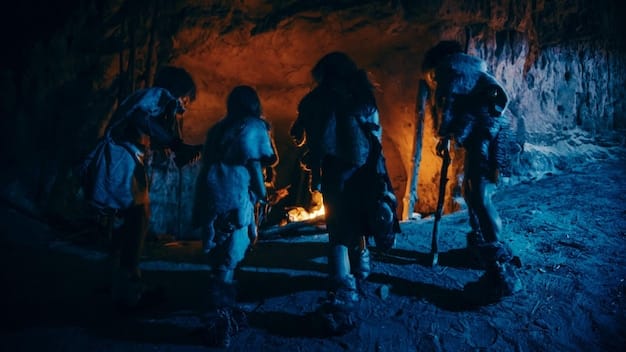
The “Site X” / “Site A” Discovery (Salmon Creek)
One of the most significant recent developments originated from an old map drawn by Governor John White himself. This map, held at the British Museum, remarkably contained two patches, one of which covered a symbol believed to indicate a fort. When conservationists peeled back the patch in 2012, they revealed a symbol for a fort located roughly 50 miles inland from Roanoke, near present-day Plymouth, North Carolina, on Salmon Creek. This site, now dubbed “Site X” by some and “Site A” by the First Colony Foundation, suggests the colonists may have planned a move to a more defensible inland location.
Subsequent archaeological digs at Site X have yielded promising results:
- 16th-Century Pottery: Fragments of British border ware and locally made Native American pottery, suggesting cohabitation or interactions.
- Metal Objects: Period-appropriate metal objects, including pieces of a gun or an agricultural tool, consistent with early English settlements.
- Fortification Remains: Preliminary indications of a defensive structure or palisade, aligning with the “fort” marker on White’s map.
While not definitive proof of the entire colony’s relocation, these findings strongly indicate that some English colonists, or at least a reconnaissance party, ventured inland and possibly established a separate outpost. This dramatically shifts the focus from a singular tragic disappearance to a potential planned, yet perhaps unsuccessful, dispersal.
Fort Raleigh National Historic Site and Croatoan Island
Continued excavations at the traditional Fort Raleigh National Historic Site on Roanoke Island itself have also provided valuable insights. While a massive central fort has not been found, smaller defensive structures and domestic artifacts consistent with the 1587 period have been uncovered. More importantly, research on Hatteras Island (historically Croatoan Island) has intensified. The precise location of the Croatoan village, where many believe the colonists went, has been a long-standing quest.
Archaeologists working on Hatteras have found:
- European Metal Objects: Copper rings, sword hilts, and other metal artifacts, suggesting trade or direct interaction between English colonists and the Croatoan people. Analysis indicates these items are consistent with late 16th-century English manufacturing.
- Mixed Cultural Deposits: Layers of soil containing both Native American and European artifacts in close proximity, pointing towards sustained interaction and possibly cohabitation.
These Hatteras finds lend considerable weight to the assimilation theory, suggesting that at least some survivors integrated with the Croatoan tribe. The items discovered could have been traded, gifted, or simply left behind by colonists living among the Native Americans.
The significance of these findings lies in their ability to move beyond mere speculation. They provide tangible, material evidence that supports the hypotheses of both relocation and assimilation, offering a more complex “disappearance” where the colonists might not have simply vanished, but rather adapted and scattered in response to overwhelming pressures.
Environmental and Societal Pressures on the Colonists
Beyond the intrigue of their disappearance, it’s crucial to acknowledge the immense environmental and societal pressures that the 1587 Roanoke colonists faced. These factors, often overlooked in the dramatic narratives, likely played a pivotal role in shaping their decisions and ultimately contributed to their fate. The interplay of climate, resource availability, and Native American relations created a formidable challenge for survival.
Drought and Resource Scarcity
Recent paleoclimatology studies, analyzing tree rings and other environmental proxies, have revealed that the period between 1587 and 1589, precisely when the Roanoke colonists were present, was the driest three-year period in an 800-year span. This severe drought would have had catastrophic implications for an agricultural settlement:
- Crop Failures: Diminished harvests of corn, beans, and squash, essential for sustenance.
- Water Shortages: Limited access to fresh drinking water, impacting health and sanitation.
- Reduced Game: Drought conditions affecting local wildlife, further exacerbating food shortages.
Such extreme environmental stress would have made self-sufficiency almost impossible, forcing the colonists to either rely heavily on Native American trade (which could strain relationships) or seek new, more fertile locations inland. The scarcity of resources likely triggered internal debates about the colony’s viability and future, possibly prompting the decision to move.
Relations with Native American Tribes
The relationship between the English colonists and the Algonquian-speaking peoples was a complex tapestry of cooperation, trade, and outright hostility. While Governor White had established a more conciliatory approach compared to previous English leaders, tensions were inherent and often flared into violence.
The Secotan, who inhabited the mainland near Roanoke, were generally hostile, often clashing with the English over land and resources. In contrast, the Croatoan, led by Chief Manteo (who had traveled to England), were often allies. However, even these alliances could be fragile, influenced by the need for resources and the broader geopolitical landscape of inter-tribal relations.
The drought would also have heightened tensions among Native American tribes themselves, potentially leading to increased competition for scarce resources and reducing their willingness or ability to help the English. Faced with dwindling food supplies and escalating external pressures from hostile tribes, the colonists would have been compelled to make drastic decisions. Whether they integrated out of necessity or moved for strategic survival, the environmental and societal context of their struggle cannot be underestimated in understanding their ultimate trajectory.
Technological Advances in Archaeological Research
The shift from traditional theories to evidence-based insights in the Roanoke mystery is largely attributable to significant technological advancements in archaeology. Modern techniques allow researchers to extract far more information from the landscape and buried artifacts than ever before, transforming the field from speculative digging to precise, scientific investigation.
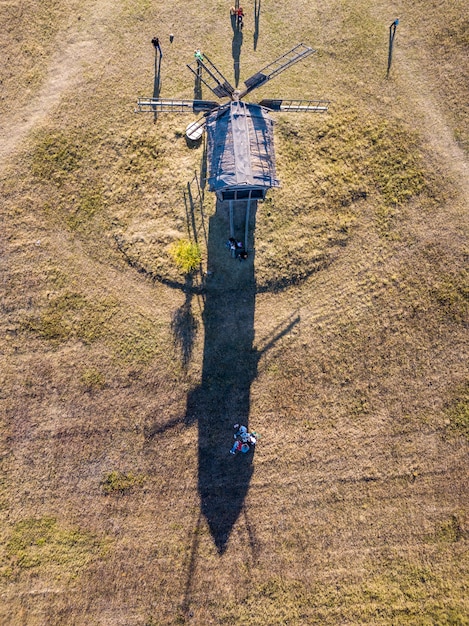
Geophysical Survey Techniques
One of the most revolutionary developments has been the widespread adoption of non-invasive geophysical survey techniques. These methods allow archaeologists to “see” beneath the ground without disturbing it, identifying potential features or anomalies that might indicate human activity.
- Ground-Penetrating Radar (GPR): Uses radar pulses to create an image of subsurface features, revealing buried foundations, pits, or walls. GPR has been crucial in identifying potential former structures at both Roanoke Island and Site X.
- Magnetometry: Detects variations in the earth’s magnetic field, which can be caused by human disturbances like hearths, ditches, or metal objects. This has helped pinpoint areas of intensive past human activity.
- Lidar (Light Detection and Ranging): An aerial mapping technique that uses laser pulses to create highly detailed 3D models of the landscape, even penetrating dense foliage. Lidar can reveal subtle changes in topography that suggest old roads, earthworks, or settlement patterns, even if long overgrown.
These techniques allow for targeted excavations, saving time and resources, and minimizing damage to invaluable historical sites. They provide a comprehensive initial survey that guides the more delicate work of digging.
Material Analysis and DNA Research
Once artifacts are unearthed, modern analytical techniques offer unprecedented insights into their origin, use, and age. This has been instrumental in verifying the provenance of European artifacts found at Native American sites and vice versa.
- X-ray Fluorescence (XRF): A non-destructive method that identifies the elemental composition of materials, helping to determine the origin of metals (e.g., European vs. indigenous sources of copper) or pottery types.
- Isotope Analysis: Analyzing stable isotopes in human or animal remains can provide clues about diet, geographical origin, and migration patterns. If human remains linked to the colonists are ever found, this could be a game-changer.
- DNA Analysis: While no confirmed Roanoke colonists’ remains have been definitively identified, future advances in ancient DNA analysis might one day allow for genetic links between historical populations and their modern descendants, including Native American groups that may have integrated the colonists.
These advancements not only confirm hypotheses but also push the boundaries of what can be learned from seemingly small fragments. They emphasize the meticulous, interdisciplinary nature of contemporary archaeology, transforming historical mysteries into scientific investigations backed by empirical data.
Future Directions and Unanswered Questions
While recent archaeological finds have cast new light on The Mystery of the Lost Colony of Roanoke: What Recent Archaeological Finds Suggest About the Fate of the Early Settlers, the saga is far from concluded. The ongoing discoveries underscore the complexity of the disappearance and propel researchers towards new avenues of inquiry. The remaining unanswered questions continue to fuel passionate debate and dedicated research, promising more revelations in the years to come.
The Search for a Definitive Answer
Despite the compelling evidence pointing towards relocation and assimilation, a definitive “smoking gun” that accounts for all 117 colonists remains elusive. This is partly due to the passage of time—over 400 years—and the destructive forces of weather, erosion, and human development on historical sites. The coastal plain of North Carolina is a challenging environment for preserving archaeological evidence, with shifting sands and acidic soils often deteriorating organic materials rapidly.
Future research will likely focus on an even more extensive survey of the areas indicated by John White’s map, particularly around the Albemarle Sound. This region, proposed as a potential relocation site, offers vast stretches of unexplored territory. The challenge will be to secure funding and resources for such large-scale, long-term expeditions, which often involve complex partnerships between academic institutions, government agencies, and private foundations.
- Broadening Search Areas: Expanding surveys beyond known sites to encompass more of the inland territories suggested by historical maps and oral traditions.
- Combining Data Sets: Integrating archaeological data with historical documents, oral histories, environmental studies, and genealogical research to create a more holistic picture.
- Technological Innovation: Continued development of even more sensitive geophysical tools and analytical techniques to detect subtle archaeological features.
The quest for a definitive answer is not just about finding artifacts; it’s about reconstructing the lives and experiences of these early settlers in a dynamic and often brutal frontier environment.
The Enduring Legacy of Roanoke
Regardless of whether a single, conclusive answer ever emerges, the enduring mystery of the Roanoke Colony continues to resonate. It serves as a powerful reminder of the immense challenges faced by early European colonists and the profound impact of their arrival on indigenous populations. The story has become an integral part of American folklore and identity, symbolizing both the pioneering spirit and the harsh realities of colonial encounters.
The archaeological pursuit itself holds significant value: it provides a tangible link to the past, stimulates public interest in history, and fosters a deeper appreciation for both European and Native American heritage. Each new artifact, each piece of excavated pottery, and each subtly revealed subsurface feature adds depth to our understanding, transforming a simple “disappearance” into a complex narrative of human resilience, adaptation, and interaction.
The Roanoke mystery encapsulates the very essence of archaeological discovery: it’s a patient, meticulous unraveling of the past, fraught with challenges but brimming with the potential for transformative insights. The future undoubtedly holds more surprises as new generations of researchers take up the mantle, ensuring that the lost colonists of Roanoke will continue to inspire and intrigue for centuries to come.
| Key Point | Brief Description |
|---|---|
| 🔍 Site X / Site A | Evidence of an inland fort near Salmon Creek suggests a planned relocation. |
| 🤝 Assimilation Theory | European artifacts on Hatteras Island indicate integration with the Croatoan tribe. |
| ☀️ Severe Drought | Paleoclimatology shows extreme drought during their stay, forcing relocation or resource scarcity. |
| 🔬 Tech Advances | GPR, magnetometry, and XRF are revolutionizing the search for clues. |
Frequently Asked Questions About Roanoke’s Fate
▼
“CROATOAN” was carved into a post found at the abandoned Roanoke settlement. It refers to a nearby island and a friendly Native American tribe. Its significance lies in suggesting a directed departure, potentially indicating the colonists relocated to live with the Croatoan people rather than being massacred.
▼
“Site X” (also known as “Site A”) is an archaeological site near Salmon Creek, North Carolina. It’s important because it aligns with a ‘fort’ symbol on Governor John White’s map, covered by a patch. Excavations there have uncovered 16th-century English and Native American artifacts, suggesting some colonists may have moved inland.
▼
Recent archaeological findings, particularly on Hatteras Island (historically Croatoan Island), strongly support the integration theory. The discovery of European metal objects and mixed cultural deposits suggests sustained interaction and possible cohabitation between English colonists and the Croatoan people, indicating assimilation as a likely fate for at least some survivors.
▼
Paleoclimatology studies indicate the Roanoke Colony experienced severe drought between 1587 and 1589. This extreme environmental stress likely led to resource scarcity, crop failures, and heightened tensions with Native American tribes, profoundly impacting the colony’s ability to sustain itself and potentially forcing their relocation.
▼
Modern archaeological research is significantly enhanced by technologies like Ground-Penetrating Radar (GPR), magnetometry, and Lidar for non-invasive subsurface mapping. Additionally, material analysis techniques such as X-ray Fluorescence (XRF) and isotope analysis provide detailed insights into artifact origins and historical interactions, revolutionizing the quest for answers.
Conclusion
The enduring mystery of the Lost Colony of Roanoke, once shrouded in historical ambiguity, is slowly but surely being illuminated by the meticulous work of modern archaeology. Recent discoveries, particularly at “Site X” and on Hatteras Island, provide compelling empirical evidence that challenges long-held assumptions of a singular, dramatic disappearance. Instead, the narrative pivoting towards a more complex scenario involving planned relocation and probable assimilation with Native American tribes. Factors such as extreme environmental pressures, notably a severe drought, and intricate relations with indigenous populations likely compelled the colonists to seek new arrangements for survival. While definitive answers for every individual remain elusive, the application of cutting-edge geophysical and analytical technologies continues to unearth tantalizing clues, transforming one of America’s oldest historical enigmas into a testament to human resilience and adaptation in the face of daunting challenges. The story of Roanoke continues to be written, shaped by every piece of earth turned and every artifact meticulously analyzed.
